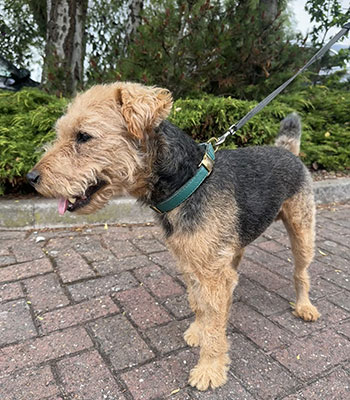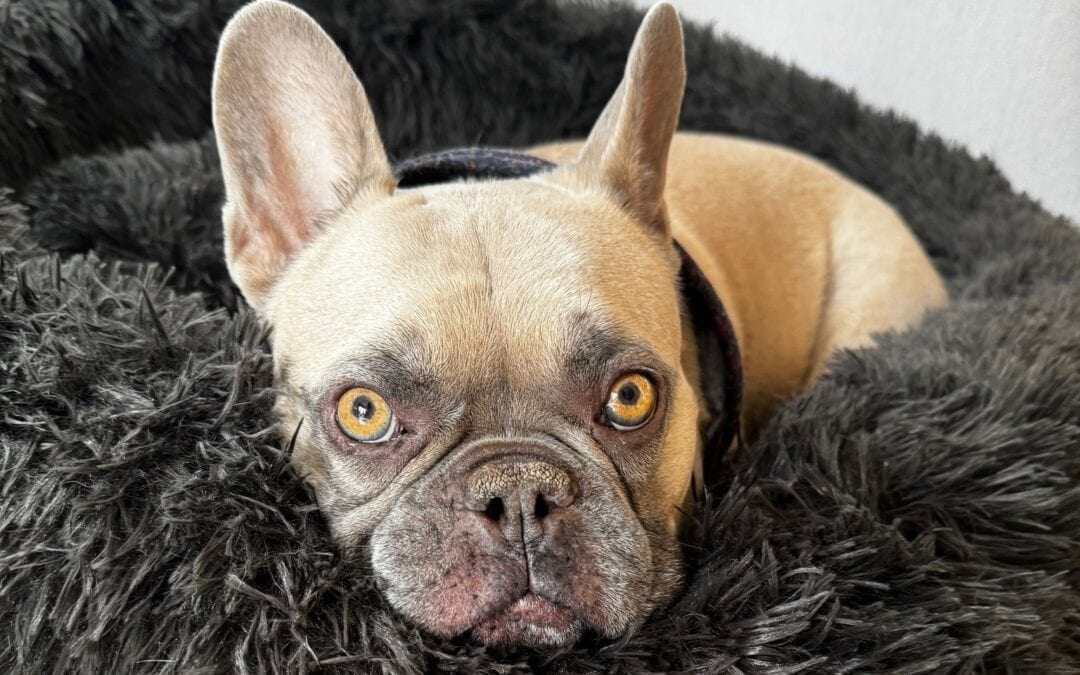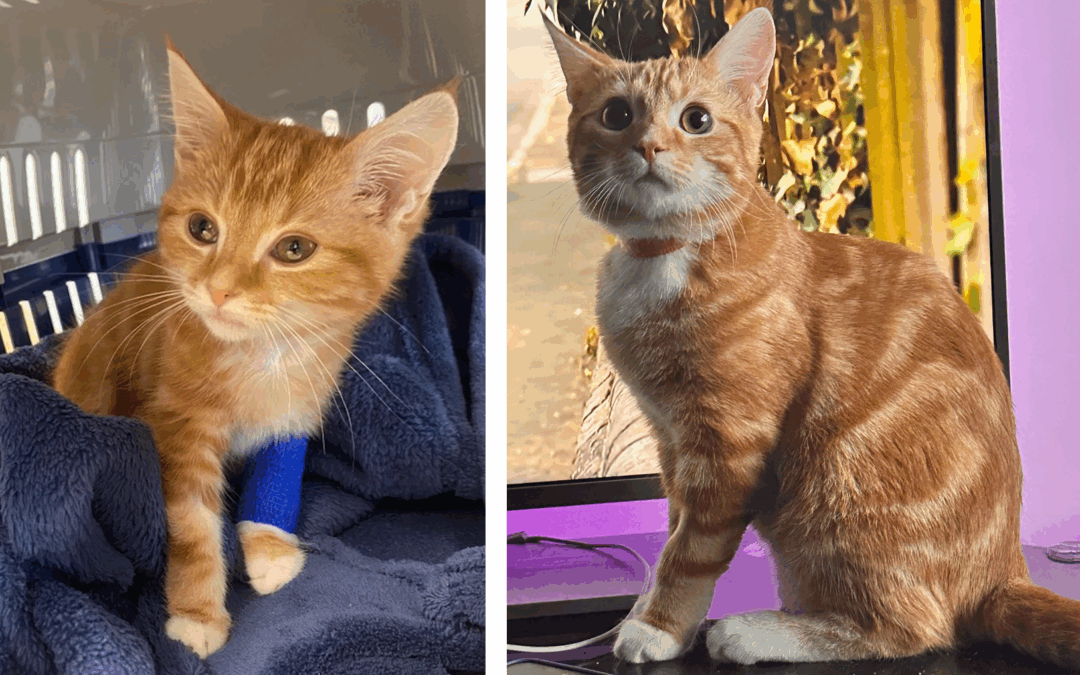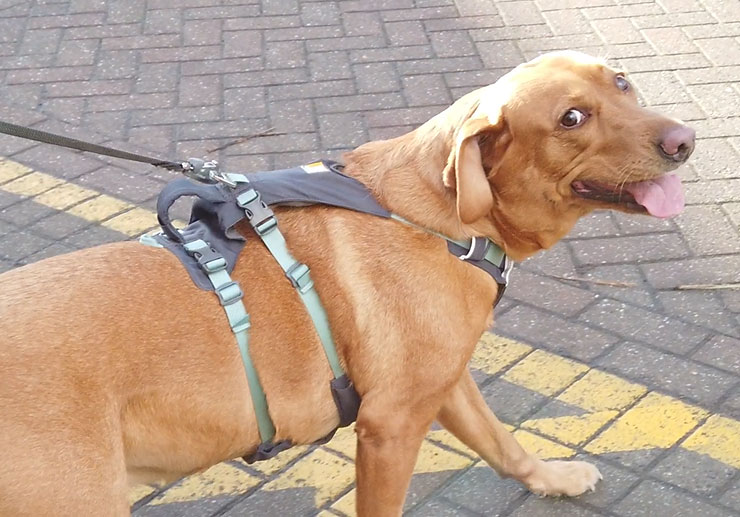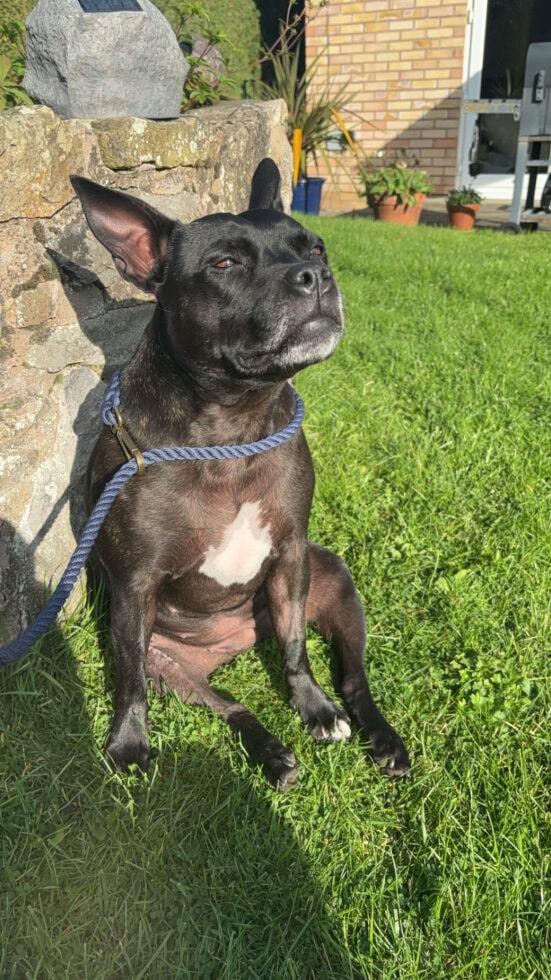 Meet the fabulous Betty Boop, a very lovely, very lively (and very brave!) 3 year old Staffordshire Bull Terrier. Betty has visited us twice at Chestergates, under the care of our head orthopaedic surgeon David Thomson, for surgery in both of her knees.
Meet the fabulous Betty Boop, a very lovely, very lively (and very brave!) 3 year old Staffordshire Bull Terrier. Betty has visited us twice at Chestergates, under the care of our head orthopaedic surgeon David Thomson, for surgery in both of her knees.
Betty initially saw David in September last year after she developed a limp in her right back leg, and again in February of this year for the same issue in her left leg. Both times, after a thorough clinical examination, David suspected that Betty had ruptured her cruciate ligament. This is a relatively common condition in dogs, where one of the ligaments that stabilises the knee joint gradually deteriorates. Eventually, the degeneration of the ligament makes the knee joint unstable, causing pain and lameness. Rupture of the cruciate ligament is actually a common injury in footballers!
On both occasions, Betty was admitted to our hospital for x-rays, which confirmed David’s suspicions of a cruciate ligament rupture. To fix this, David performed a specialised orthopaedic surgery called a ‘tibial plateau levelling osteotomy’ – this is commonly referred to as a TPLO. During a TPLO, the tibia (the shin bone) is cut and adjusted, and a specially-engineered metal implant is inserted and fixed with screws. This changes the mechanics of the knee joint, making it more stable, so that the degenerated cruciate ligament is no longer required.
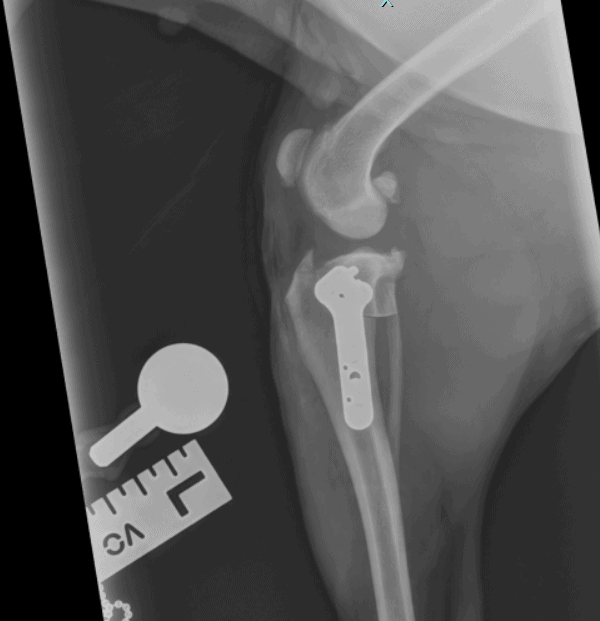
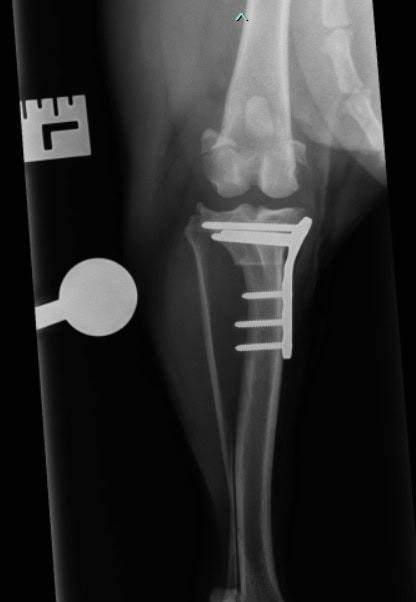
To facilitate her surgery, Betty was examined by our Specialist anaesthesia service. A tailored anaesthetic plan was designed by our anaesthetists just for Betty, which included an ultrasound-guided nerve block with a local anaesthetic (a similar kind of procedure to a nerve block you might have received at the dentist for a filling or a tooth removal!). Betty’s nerve block provided excellent quality pain relief for her during and after her surgery.
Our experienced theatre nursing team prepared and monitored Betty throughout her anaesthetic and surgery, making sure she was safe and comfortable. X-rays were taken of Betty’s leg before and after her surgery – firstly to measure her bones, to enable the correctly sized implant to be chosen, and then to ensure the implants were in the correct place. Check out the x-ray from one of Betty’s surgeries showing her new metal-work!
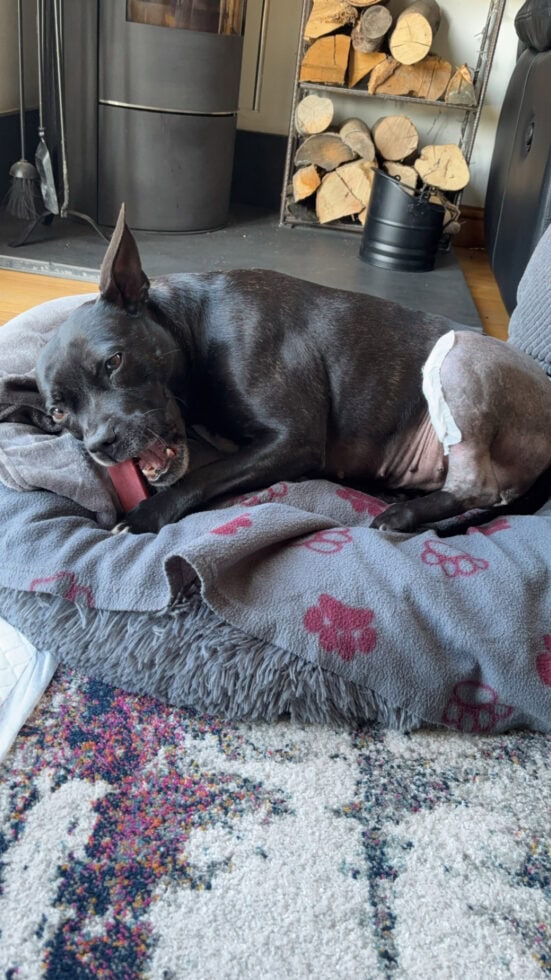
During her recovery from anaesthesia and surgery, Betty was transferred to our hospital ward for round-the-clock care. Here, she was looked after by our wonderful team of wards nurses, interns and veterinary care assistants. Our team gave Betty her important post-operative medications, monitored her comfort levels and, of course, provided plenty of attention and cuddles!
Betty was discharged to her dedicated owners following her recovery from surgery, who carefully monitored her during 6 weeks of strict rest. Her active mind was kept occupied during this time with plenty of chews and activities that stimulated her brain (rather than exercising her legs). You can see Betty enjoying a chew in one of the photos her owners kindly provided.
Betty returned to us after her period of ‘house arrest’ following her most recent surgery for a check-up. David was happy to see that Betty is doing extremely well with her bionic knees and promptly signed her off from his care – she enjoyed her first few days of freedom by paying a visit to her local geese to say hello. 6 weeks on, Betty is now back to her normal happy self, enjoying walks along the river and visiting the beach!
Thank you very much to Betty’s brilliant owners for allowing us to share her story, and for taking such wonderful care of her throughout her recoveries from both surgeries. WELL DONE BETTY!

